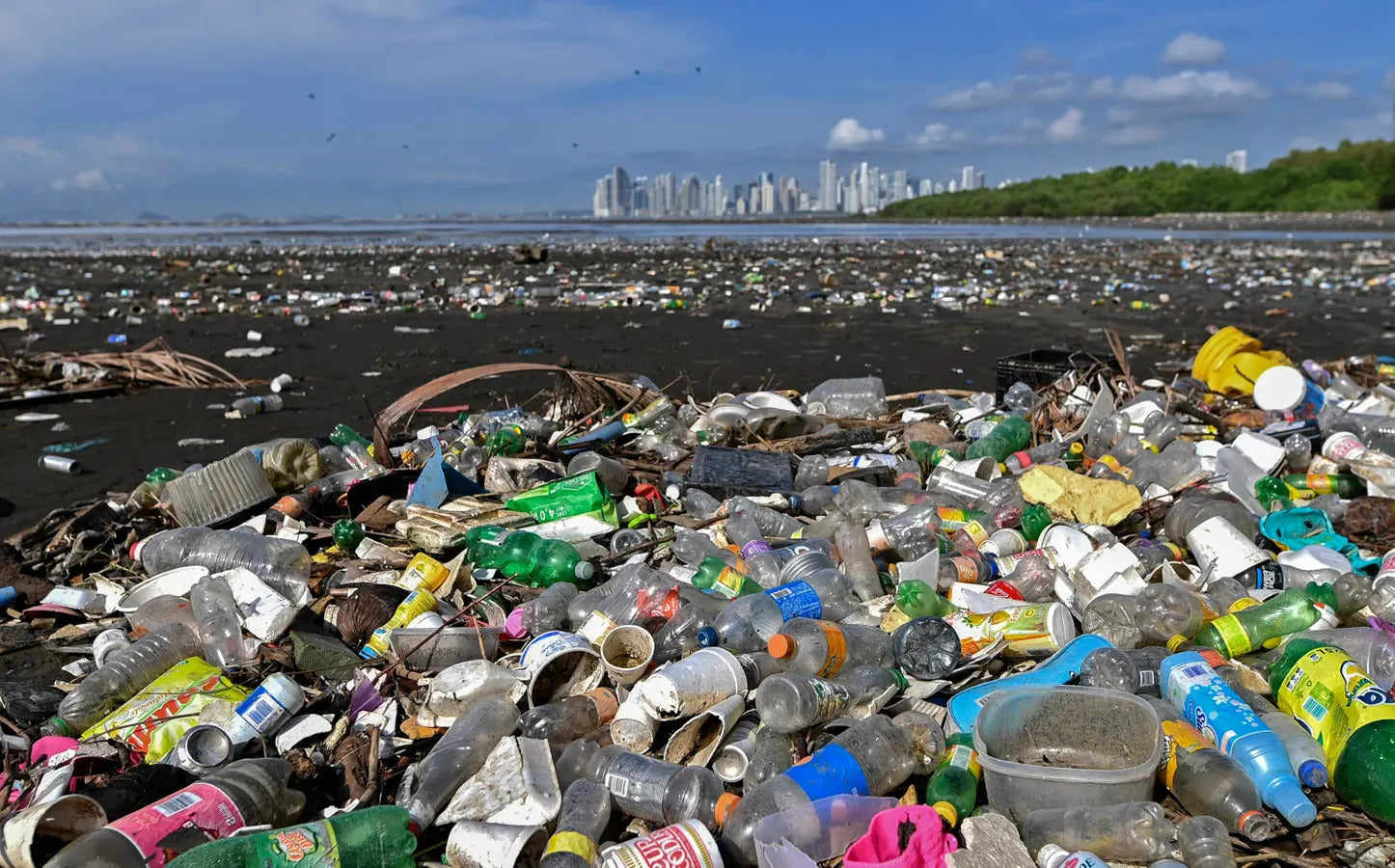The plastic pollution crisis has reached a new and alarming scale. In 2025, the numbers are more sobering than ever—painting a picture of a problem that touches every corner of the planet. From the deepest oceans to the air we breathe, plastic has infiltrated ecosystems, communities, and even our bodies.
This article breaks down the most critical facts and figures about plastic pollution in 2025. By understanding the scale of the crisis, we can better grasp why urgent action is needed—and how each of us can be part of the solution.
The Sheer Scale of the Problem
Plastic has become the most ubiquitous material of modern life—used in everything from packaging to clothing. But its durability, once celebrated, has now become its curse.
Here are the facts that define the crisis:
-
400 million tons of plastic are produced annually. This number is expected to triple by 2060 if current trends continue.
-
Only 9% of plastic is recycled. The vast majority is either incinerated (emitting harmful greenhouse gases) or ends up in landfills and the natural environment.
-
40% of all plastic is single-use. Items used for just minutes—bags, bottles, cutlery—persist for centuries after disposal.
The result? A world drowning in plastic waste. Landfills overflow, rivers carry debris into seas, and communities—especially in developing countries—bear the brunt of mismanaged waste.
Oceans Under Siege 🌊
Perhaps nowhere is plastic pollution more visible than in our oceans. Every year, an estimated 11 million tons of plastic leak into marine environments. Without intervention, this figure could nearly triple by 2040.
The Great Garbage Patches
Ocean currents sweep plastic debris into massive gyres, creating floating dumps known as garbage patches. The most infamous, the Great Pacific Garbage Patch, covers an area estimated to be twice the size of Texas.
The Toll on Marine Life
The impacts on wildlife are devastating:
-
Over 1 million seabirds die each year from ingesting plastic.
-
100,000 marine mammals and turtles are killed annually through entanglement or consumption.
-
Fish mistake microplastics for food, introducing plastic into the food chain—eventually reaching human dinner tables.
The oceans are often described as the lungs of our planet, producing over half the oxygen we breathe. But plastic is choking this vital system.
The Threat of Microplastics
Plastic doesn’t disappear; it breaks down into tiny fragments called microplastics (less than 5mm). These particles are now everywhere.
Where microplastics are found:
-
In the air: We inhale them daily in urban environments.
-
In water: 98% of bottled water and 83% of tap water samples tested worldwide contain microplastics.
-
In food: Found in seafood, salt, honey, and even fruits and vegetables.
-
In our bodies: Recent studies have detected microplastics in human bloodstreams, lungs, and placentas.
The long-term health impacts are still being studied, but early evidence suggests microplastics can cause inflammation, disrupt hormones, and potentially carry toxic chemicals into our bodies.
The Single-Use Epidemic 🥤
Single-use plastics are at the heart of the crisis. Designed for convenience, these products dominate global waste streams.
Common culprits:
-
Plastic straws and stirrers – billions are thrown away every year.
-
Cutlery and plates – difficult to recycle and often contaminated with food.
-
Shopping bags – used for minutes but take centuries to degrade.
-
Takeout containers – especially polystyrene foam, which never truly breaks down.
According to UNEP (United Nations Environment Programme), single-use plastics account for half of all plastic produced globally. These items are the least necessary, yet the most damaging—representing a clear area where change is both possible and impactful.
A Path Forward: From Crisis to Change 🌱
The scale of the plastic pollution crisis is overwhelming, but there is hope. Across the globe, momentum is building around solutions:
Policy Change
-
Over 90 countries have already implemented bans or restrictions on single-use plastics, targeting items like bags, straws, and cutlery.
-
International discussions are moving toward a Global Plastic Treaty, aiming to create a unified framework for reducing plastic production and improving waste management.
Business Innovation
-
Companies are rethinking packaging, embracing refill models, and investing in compostable materials.
-
Brands like EQUO are leading the way with plant-based, compostable alternatives—from sugarcane food containers to coffee-ground straws—that replace single-use plastics without sacrificing convenience.
Individual Action
While systemic change is vital, personal choices still matter. Here’s how you can contribute:
-
Carry reusables – Bring your own bottle, straw, or tote bag.
-
Support sustainable brands – Choose businesses committed to reducing their footprint.
-
Say no to single-use – Politely decline straws, bags, or unnecessary packaging.
-
Spread awareness – Encourage your community to make eco-conscious swaps.
Conclusion
The plastic pollution crisis in 2025 is a stark reminder of humanity’s overreliance on convenience—and the consequences of inaction. With 400 million tons produced annually, only 9% recycled, and 11 million tons entering our oceans each year, the facts are impossible to ignore. Microplastics in our food and air make this not just an environmental issue, but a human health emergency.
Yet within this crisis lies an opportunity: to transform how we live, consume, and create. From government bans to innovative plant-based alternatives from brands like EQUO, solutions exist. What’s needed now is the will—at every level, from policymakers to businesses to individuals—to act.
Because the future doesn’t have to be plastic. It can be cleaner, healthier, and more sustainable—if we start today.


